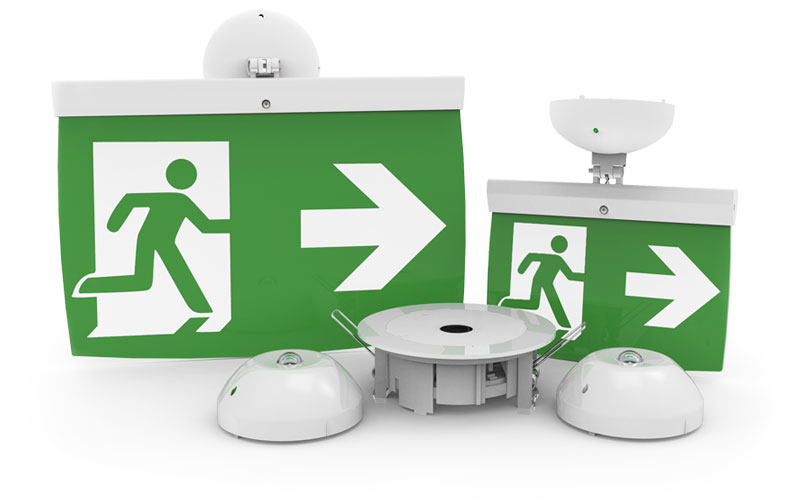Emergency Lighting
An emergency lighting system enables
people to leave a building safely in the event of a
mains power cut leaving it in near or total darkness.
The emergency system needs to meet fire
safety legislation, so it is visually acceptable as well
as meeting the user's needs for ease of operation and
maintenance.
All relevant legal requirements for the
emergency lighting should be established before
beginning the design; ideally these should be agreed
between the system designer, user, fire authority,
building control officer and system installer.
Emergency lighting is usually required
to operate fully automatically and give sufficient
illumination to enable people of all ages to evacuate
the building safely. Most new buildings now have
emergency lighting installed during construction, the
design and type of equipment is normally specified by
the relevant local authority, architect or consultant.
Types of emergency lighting
Non-maintained - The emergency light is only illuminated
when the mains supply is interrupted.
Maintained - The emergency light uses the same source
for both mains, which is usually switched and in
emergency mode.
Sustained- The emergency light has a separate light
source for both mains and emergency mode, for Emergency
Lighting.
Emergency Lighting & Maintenance
The British Standard recommends that all emergency lighting systems are serviced every six months.
Our engineers regularly carry out this type of work and our vehicles carry all the necessary testing equipment to cater for all types of Systems.
Vulcan Fire offers full service and maintenance of emergency lighting in accordance with BS5266 and BS9990.
Call Vulcan Fire on 0845 017 8184 for more information and advice on emergency lighting for your premises.



